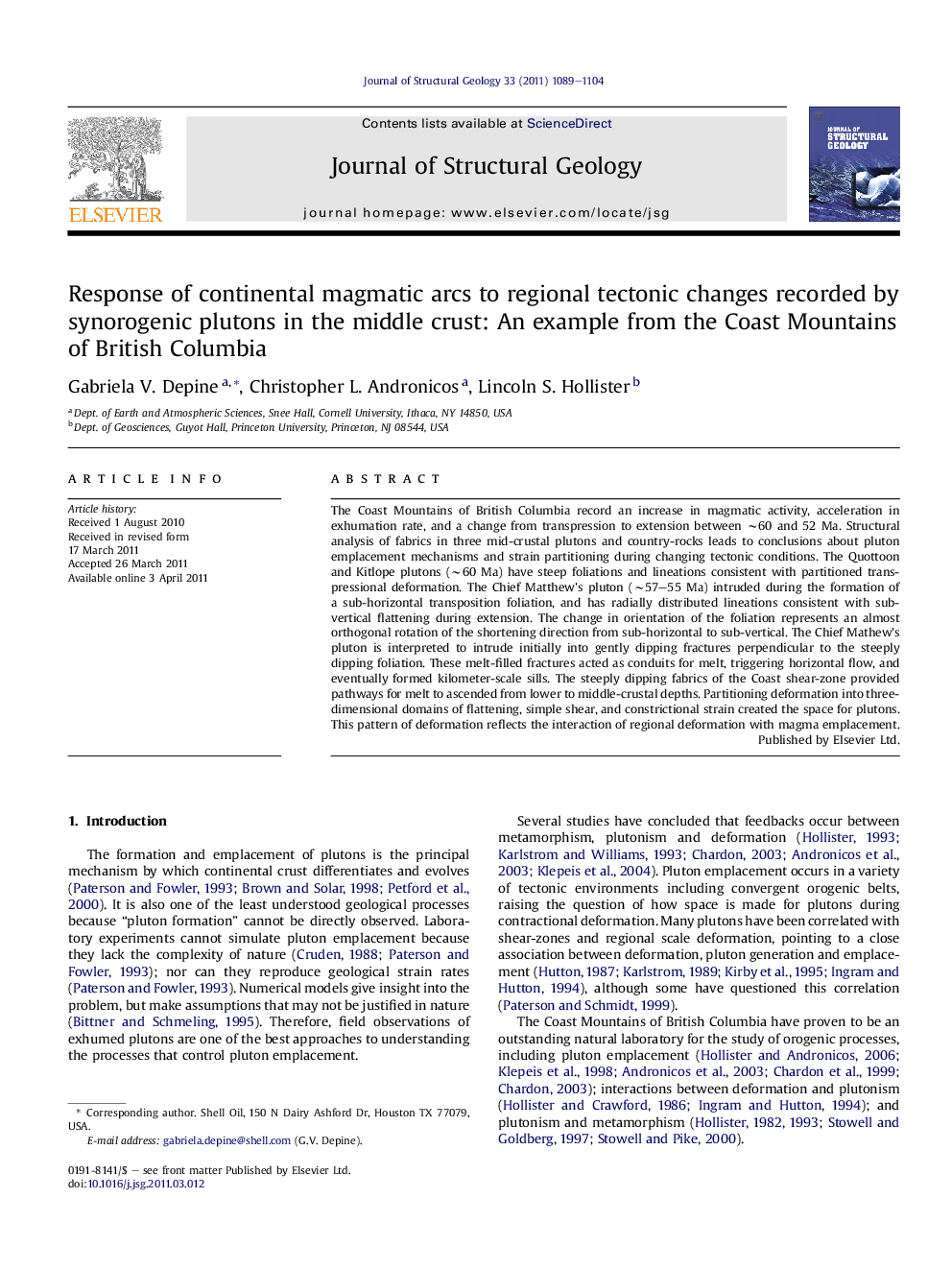| کد مقاله | کد نشریه | سال انتشار | مقاله انگلیسی | نسخه تمام متن |
|---|---|---|---|---|
| 4733663 | 1357043 | 2011 | 16 صفحه PDF | دانلود رایگان |

The Coast Mountains of British Columbia record an increase in magmatic activity, acceleration in exhumation rate, and a change from transpression to extension between ∼60 and 52 Ma. Structural analysis of fabrics in three mid-crustal plutons and country-rocks leads to conclusions about pluton emplacement mechanisms and strain partitioning during changing tectonic conditions. The Quottoon and Kitlope plutons (∼60 Ma) have steep foliations and lineations consistent with partitioned transpressional deformation. The Chief Matthew’s pluton (∼57–55 Ma) intruded during the formation of a sub-horizontal transposition foliation, and has radially distributed lineations consistent with sub-vertical flattening during extension. The change in orientation of the foliation represents an almost orthogonal rotation of the shortening direction from sub-horizontal to sub-vertical. The Chief Mathew’s pluton is interpreted to intrude initially into gently dipping fractures perpendicular to the steeply dipping foliation. These melt-filled fractures acted as conduits for melt, triggering horizontal flow, and eventually formed kilometer-scale sills. The steeply dipping fabrics of the Coast shear-zone provided pathways for melt to ascended from lower to middle-crustal depths. Partitioning deformation into three-dimensional domains of flattening, simple shear, and constrictional strain created the space for plutons. This pattern of deformation reflects the interaction of regional deformation with magma emplacement.
► Three batholiths track changing patterns of deformation related to changes in plate kinematics along the Canadian Cordillera.
► The plutons intruded synchronous with the waning stages of transpressional deformation across the Coast shear-zone.
► Change in shortening directions from horizontal to vertical occurred between 60 and 55 Ma. When melt-filled fractures form, local incremental strain field is reoriented.
► This explains transposition of foliation.
► Complex patterns of partitioned deformation near plutons should be interpreted as both regional and near-field processes.
Journal: Journal of Structural Geology - Volume 33, Issue 6, June 2011, Pages 1089–1104